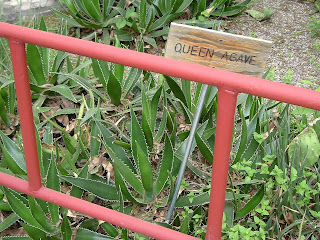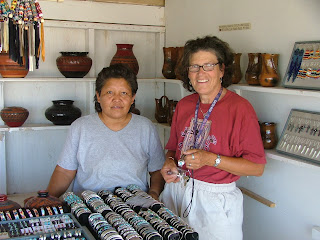 Texas'
Texas' Big Bend country is truly beautiful, and very little visited. We particularly wanted to go in the Spring, when the cactus blooms. Unfortunately, there having been very little rain for the last four years, it didn't bloom much.
But, where there is water, it's pretty neat...

A Sure-nough Texas Longhorn cow.

They stand the heat and dryness much better than Angus or Shorthorns, but have as much meat on ten of them as on one Angus. So, what they raise to sell are cross-breeds.

Langtry, Texas was the home of Judge Roy Bean, who said, "West of the Pecos,
I am the law!"
When he read about Lily Langtry, famous British actress, friend of Oscar Wilde and the London in-crowd and mistress of the Prince of Wales (later Edward VII), he wrote her fan letters and named the town after her. She responded by suggesting she do something nice for the town, like maybe donating a fancy water fountain. Judge Roy responded that Texans didn't consider water something for
people to drink. He used to hold court in this building, which was also his bar; he'd sometimes sentence miscreants to buy a round of drinks for everybody (a slight conflict of interest).
Below: Wildseed Farms, a plant nursery/tourist trap. Boot planters (Texans mostly wear high-heeled boots even if they don't own a horse).



Then, we get down into the big country. Big Bend National Park is right at the bottom of Texas, where the Rio Grande, and therefore the US-Mexico border makes a big bend.
Below, Javelinas, the local wild pig. Don't mess with them.






Prickly Pear Cactus flower. There is so much desert - nothing but Prickly Pear and other cactus, and a bit of wiry grass - that one flower is suddenly the most beautiful thing in the world.
Claret-Cup Cactus

A Mexican crossing the Rio Grande. Not very Grande - should be called the Rio Piqueno. Cause is that everybody takes water out of it for irrigation. Some years, there's no water at all coming out the bottom end, at Brownsville. They used to call Mexican migrant workers "wetbacks" (politically very incorrect), but this guy just gets his feet wet.
He crossed over the set up a display of carved hiking poles and jewelry, then came to check when anyone went past to see if they left money. We bought a hiking pole (carved from Ocotillo cactus, I think) , which was 1/3 of the price the National Park shops charged for ones that were no nicer.
An agave cactus. They grow for 30 years or so (not a century, as they say), and then in the course of a couple of weeks this tall spike grows up. It blossoms, has to be fertilized by moths or hummingbirds, in only one night in some species; then it goes to seed and the whole plant dies.
One species of agave is also the source of Tequila; which is as big a deal - and can be as expensive - as fine Scotch.
And - more country. It grows on you. After about the end of April, it's really hot - maybe 110 deg - so nobody much goes there until autumn. (There is a more mountainous part, tho, that's a lot cooler and a big tourist draw all year, especially for Texans.)

This is the remains of a hotel, built over a natural hotspring. Water temperature was 105 deg, which turns out to be just right, even when the air temperature is that or hotter. Very relaxing.



 At the Arizona Desert Museum: Far right, Saguaro Cactus; Near, Baja Firebarrel Cactus.
At the Arizona Desert Museum: Far right, Saguaro Cactus; Near, Baja Firebarrel Cactus.

 Kit fox; Victoria Regina Agave.
Kit fox; Victoria Regina Agave.


 Organ Pipe Cactus National Monument. Right at the South end of New Mexico, and very hot. An Organ Pipe Cactus.
Organ Pipe Cactus National Monument. Right at the South end of New Mexico, and very hot. An Organ Pipe Cactus.


 At the Arizona Desert Museum: Far right, Saguaro Cactus; Near, Baja Firebarrel Cactus.
At the Arizona Desert Museum: Far right, Saguaro Cactus; Near, Baja Firebarrel Cactus.

 Kit fox; Victoria Regina Agave.
Kit fox; Victoria Regina Agave.


 Organ Pipe Cactus National Monument. Right at the South end of New Mexico, and very hot. An Organ Pipe Cactus.
Organ Pipe Cactus National Monument. Right at the South end of New Mexico, and very hot. An Organ Pipe Cactus.

























































